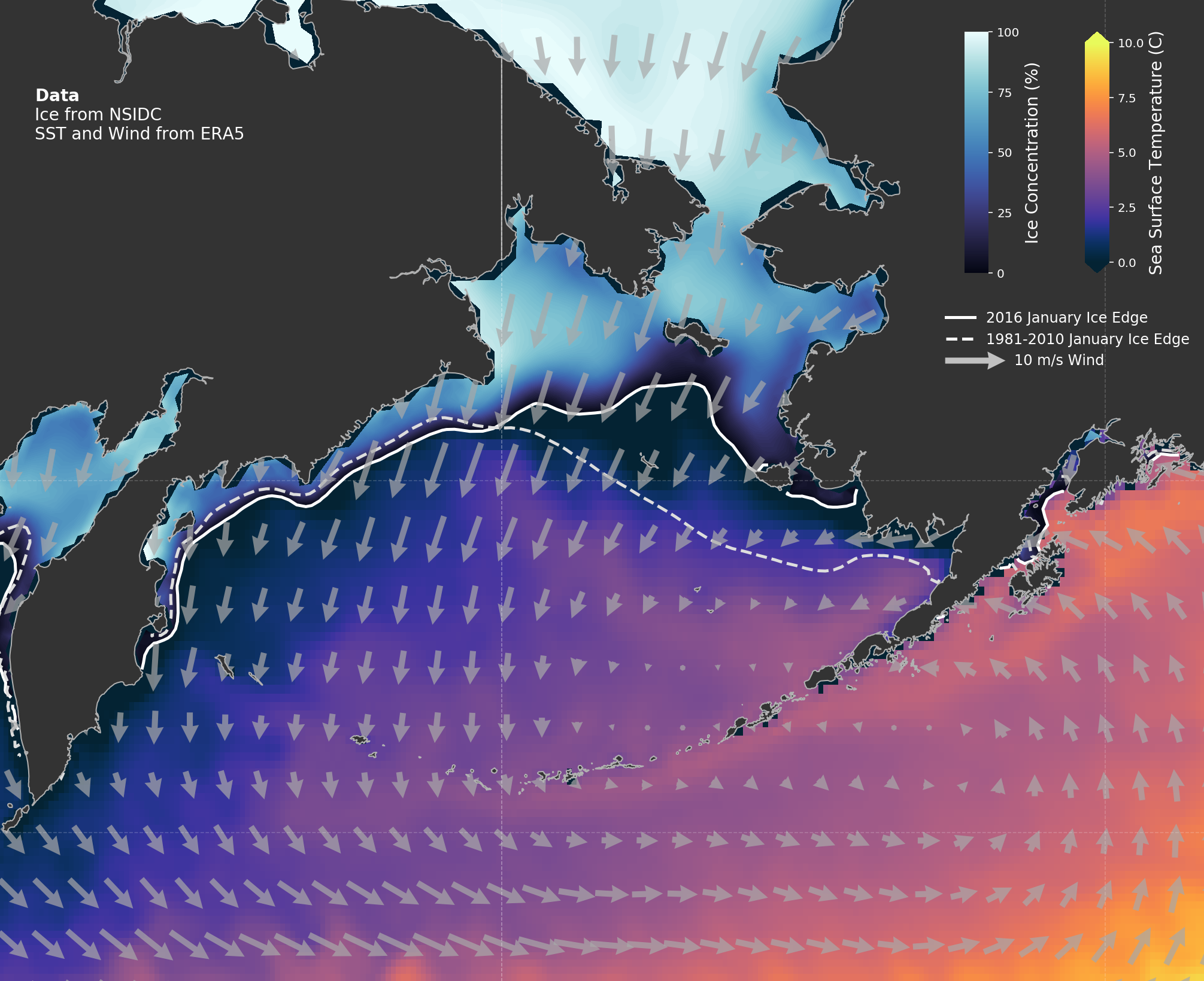Northern Winds and Their Effect on the Sea Ice Edge in the Bering Strait
In a 3-day, hackathon-style event, the Ocean Cluster Team analyzed historical winds as a potential counter to warming ocean temperatures as predictors of the sea ice idge.
Partners: Axiom Data Science, Alaska Ocean Cluster, University of Alaska Fairbanks, International Arctic Research Center, and National Science Foundation

The January, 2016 ice edge was well back from the 1981-2010 average, but it would likely have been even further north if not for strong winds blowing ice down and out of the Bering Strait. (Image: Will Koeppen, Data: NSIDC and ERA5)
PredictFest was a hackathon-style event funded by the National Science Foundation under their "Navigating the New Arctic" initiative. PredictFest brought together a multidisciplinary set of researchers studying changes in the US Arctic Region and gave them time and data analysis support to explore ideas that might be outside their normal set of projects. Axiom Data Science was a partner for PredictFest, and we helped track down datasets, brief teams so they could begin their analyses out of the gate, and provide coding and visualization support.
I was fortunate to be placed with a team put together by the Alaska Ocean Cluster and Tom Ballinger (UAF IARC). The Cluster is a startup accelerator with a goal to spur improvements to Alaska's Blue Economy, including the lofty goal of “greening” the Alaska commercial fishing fleet. In plain language: better marine planning tools that help fishing boats save fuel is good for fishermen and the environment.
Three days is a very short window for this type of research, but with satellite data held by Axiom Data Science, we calculated the 30-year average sea ice edge and compared it to sea ice edge measurements from individual years for 2011-2021. We also included sea surface temperatures and winds from ERA5 a global climate model.
These plots are pretty complicated for average users. But for the scientists in the room of PredictFest, they allowed us to quickly see how the winds might affect the ice edge each year. In brief, we found that strong winds from the North can push ice out of the Bering Strait and get close (but usually not match) the historical sea ice edge. However, when that happens, the ice in the Bering Strait is usually thinner and discontinuous relative to the past. And if there is not a strong, consistent wind, then the sea ice edge can be hundreds of miles further to the North.